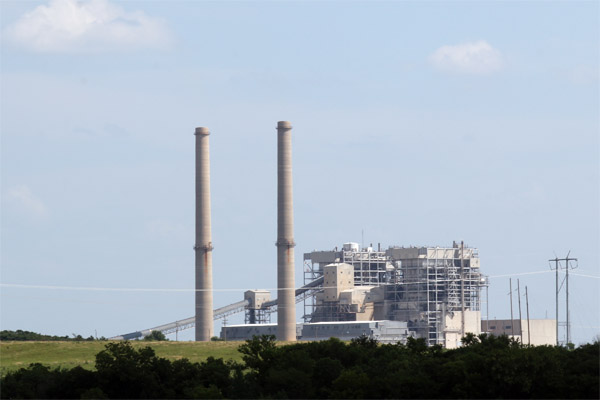OG&E ‘Attacked From All Sides’ Over Request for Record Rate Increase
-
Logan Layden

Joe Wertz / StateImpact Oklahoma
Oklahoma Gas & Electric's coal-fired Sooner Plant in Red Rock, Okla.
When Oklahoma Gas and Electric — the state’s largest utility — lost its battle with the U.S. Environmental Protection Agency over the U.S. Environmental Protection Agency’s Regional Haze Rule, it was clear the utility would have to spend millions to come into compliance with it, and looming deadlines related to new Mercury and Air Toxics Standards.
The Oklahoman‘s Paul Monies has been at the Oklahoma Corporation Commission to hear nearly all of the testimony as OG&E requests approval for a $1 billion plan that would raise customer rates by 15 percent over the next four years. And in a lengthy summation of events in the case so far, he reports the plan has very few public backers:
At various times in the first 16 days of testimony, OG&E has been criticized for not including additional wind generation, for not fully anticipating future environmental regulations and for including a $413 million request to replace its aging Mustang generating plant. (OG&E recently revised the cost estimate of the Mustang replacement down to $344 million.)
The most criticism has come over the part of the plan dealing with the Mustang plant replacement. The plant is old and under a lot of stress, but its replacement isn’t required by any of the federal environmental regulations.
Apart from OG&E, only the OG&E Shareholders Association is supportive of the Mustang plan. The other parties in the case said it should be included as part of the review in a later rate case.
OG&E said if the Mustang plan wasn’t approved, the issue won’t go away because the plant is so old. Customers would be paying to replace the generation or the plant at some point soon.
Aside from the Mustang replacement portion of OG&E’s plan, the utility is also taking heat over how it wants to comply with the Regional Haze and MATS rules, especially from the Sierra Club, which says OG&E’s plan won’t do enough to reduce the state’s reliance on coal.
The Sierra Club has been the most critical, mostly because OG&E’s plan would have it continue to run scrubbed coal units for another 30 years.
OG&E maintains its “scrub/convert” option is the most balanced way to approach the environmental compliance.
Other parties have testified the company should have explored wind as an option for the environmental compliance part, especially since wind is a zero-emissions fuel that could help the utility reach future limits on carbon dioxide emissions being contemplated by the EPA.
There’s currently a break in the rate case, which will resume on April 7.
